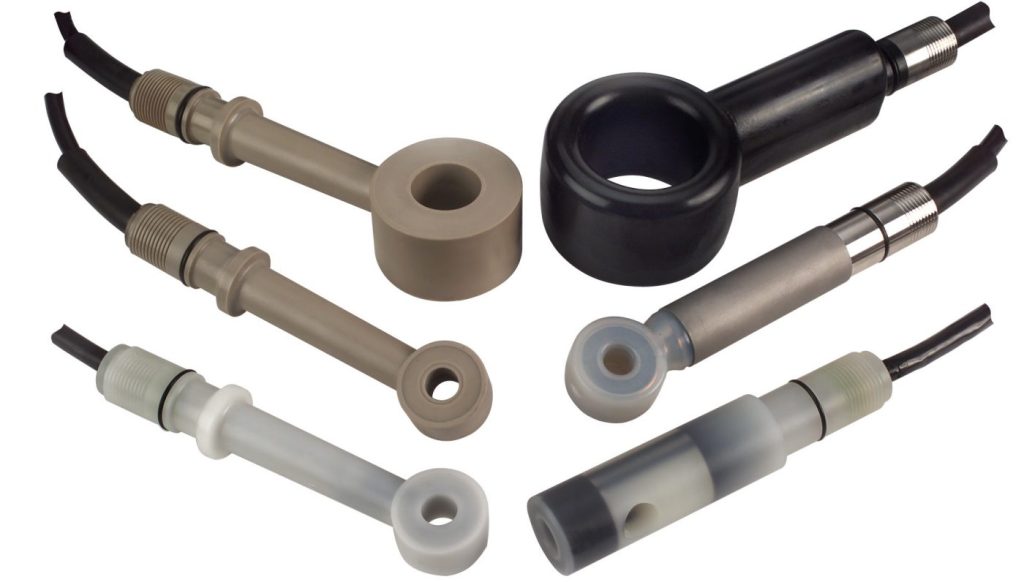
871EC Series Electrodeless Conductivity Sensors and Accessories
The Schneider Electric Model 871EC Electrodeless Conductivity Sensors, in conjunction with a variety of supporting sensor accessories, provide fouling-resistant measurements in all types of process liquids. Because of the electrodeless technique and innovative sensor design, years of continuous operation and meaningful indication of solution conductivity will be realized.
HIGH SENSITIVITY
• Through the use of innovative design technology, the range of electrodeless conductivity measurement capability has been extended. Whereas previous sensors were limited to ranges of 1000 µS/cm minimum full scale, the Foxboro large bore PEEK sensors can be ranged as low as 0 to 50 µS/cm, with sensitivities as low as approximately 8 µS/cm. This permits measurements in low conductivity applications such as boiler feedwater or steam condensate, where heretofore the electrodeless technique was not sufficiently sensitive.
PEEK MATERIAL SOLVES APPLICATION PROBLEMS
• PEEK (Polyetheretherketone) is a thermoplastic material with superb strength and chemical resistance properties over a wide range of process temperatures and pressures. PEEK sensors are available in both small and large bore configurations; each type is capable of measuring conductivity at temperatures up to 200°C (392°F).
WIDE APPLICATION FLEXIBILITY
• The Model 871EC Electrodeless Conductivity Sensors are available in a number of configurations and materials suitable for a variety of conditions that may be present in highly corrosive process solutions. These process conditions may include fouling by oil, algae or suspended impurities, abrasive slurry erosion, or metallic corrosion in highly active chemical solutions (e.g., caustics, saline solutions, and acids).
INTEGRAL TEMPERATURE SENSING
• Sensors have an integral temperature element (either a thermistor or an RTD) for the monitoring of process solution temperature. Encapsulating the thermistor or RTD (resistance temperature detector) ensures that it is located in intimate thermal contact with the process solution being monitored, thereby providing an accurate response.
features
- • High Sensitivity
- • Reliable Design
- • Easy Maintenance
- • Peek Material for Applications
- • Application Flexibility
- • Versatile Sensor Mountings
- • Integral Temperature Sensing